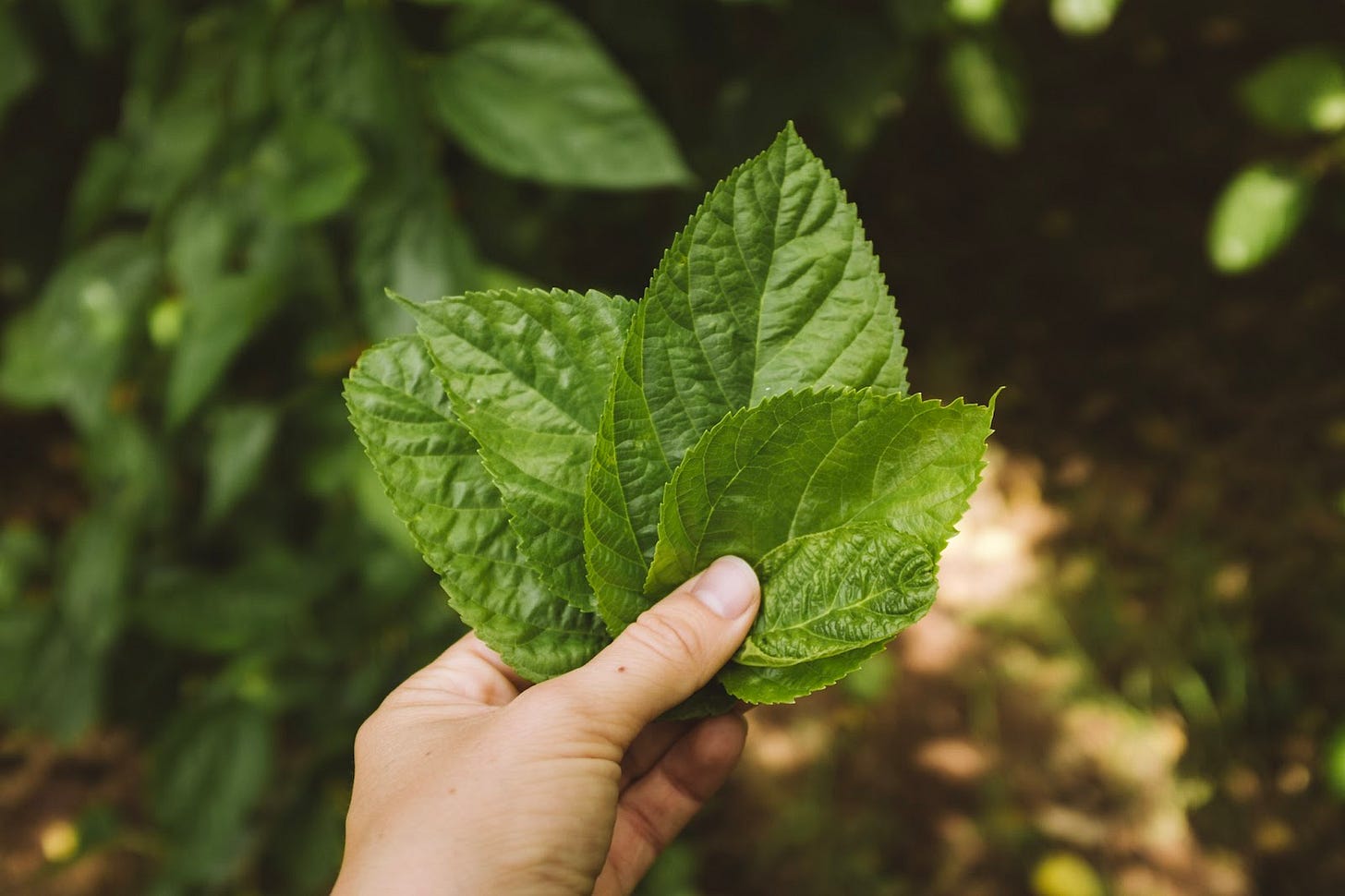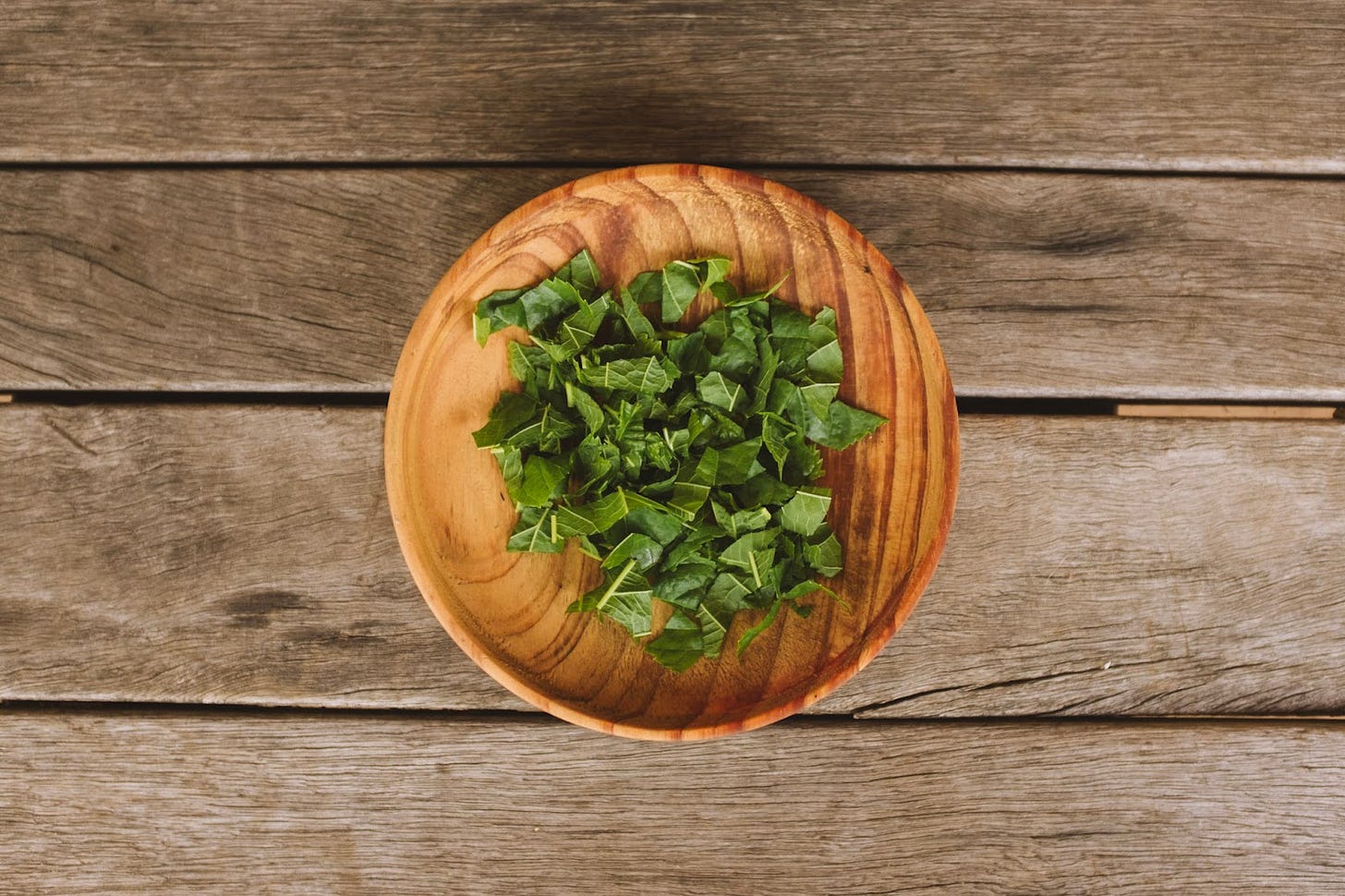Mulberry Leaf Tea
A lovely caffeine-free tea from the garden that has a long history in Chinese medicine protecting against chronic diseases.
We have an abundance of mulberries at the moment. The juicy purple fruit is a favourite in our house and I’ve been experimenting with recipes and preserving techniques to make the most of the harvest. But the fruit isn’t the only edible part of the tree. The young leaves are also edible, although they do require cooking first. Choose healthy looking new leaves and blanch them like spinach, throw them in your stews or steam them as a wrap much like you would make stuffed cabbage leaves.
A word of warning: some people have had adverse reactions to mulberry leaves, so best to tread with caution if you’re having it for the first time.
After making a fresh bottlebrush tea recently, I was keen to try more teas from the garden and mulberry leaf tea was next on my list. Fresh mulberry leaf tea is yellowy-green in colour and has a soothing, gentle flavour that reminds me of a less-bitter version of green tea. It’s caffeine free and I highly recommend it.
Health benefits
Mulberry leaves have a long history of use in traditional Chinese medicine to protect the liver, improve eyesight, reduce blood pressure and protect against cardiovascular disease.
Over the past decade many studies have looked at the potential health benefits of the mulberry plant and the results are pretty impressive. Mulberry leaves can help combat diabetes and a number of cardiometabolic risks, and thanks to a number of compounds including 1-deoxynojirimycin (DNJ) they help lower high blood sugar and insulin. They’re also antioxidant and anti-inflammatory, and contain a slew of beneficial minerals and compounds like vitamin C, iron, potassium, zinc, calcium, phosphorus and magnesium.
How to prepare mulberry leaf tea
It’s very easy to prepare mulberry leaf tea. You can use fresh leaves or alternatively you can dry the leaves by placing them on a drying screen, in your oven or in a dehydrator. Dry your leaves whole and then crumble them when you’re ready to use them. Store in an airtight container in a dark place.
To make mulberry leaf tea:
Pick a handful of healthy new leaves. Avoid using older leaves.
Chop your leaves up into small pieces and add them to a teapot. Aim for about 2 tablespoons of fresh leaves or 1 tablespoon of crushed dry leaves per 250mL of water.
Add cold water to the pot and bring to the boil, leaving on the heat for 10-15 minutes. Serve.
Mulberry leaf tea blends
If you like the taste of mulberry leaf tea, use it as a base for creating some herbal blends from the garden. It pairs well with lemon, but some basil and mint notes would be welcome too. Enjoy your mulberry leaf tea with some scones lathered in mulberry jam!
Peace, Melody
All photographs by me, 2023.







